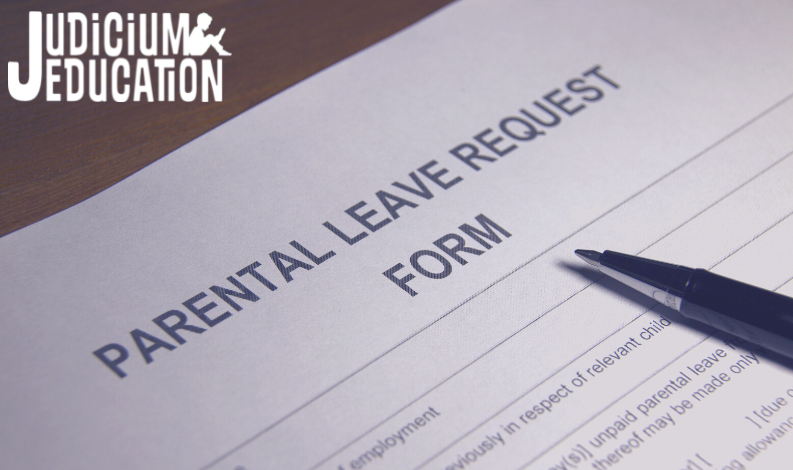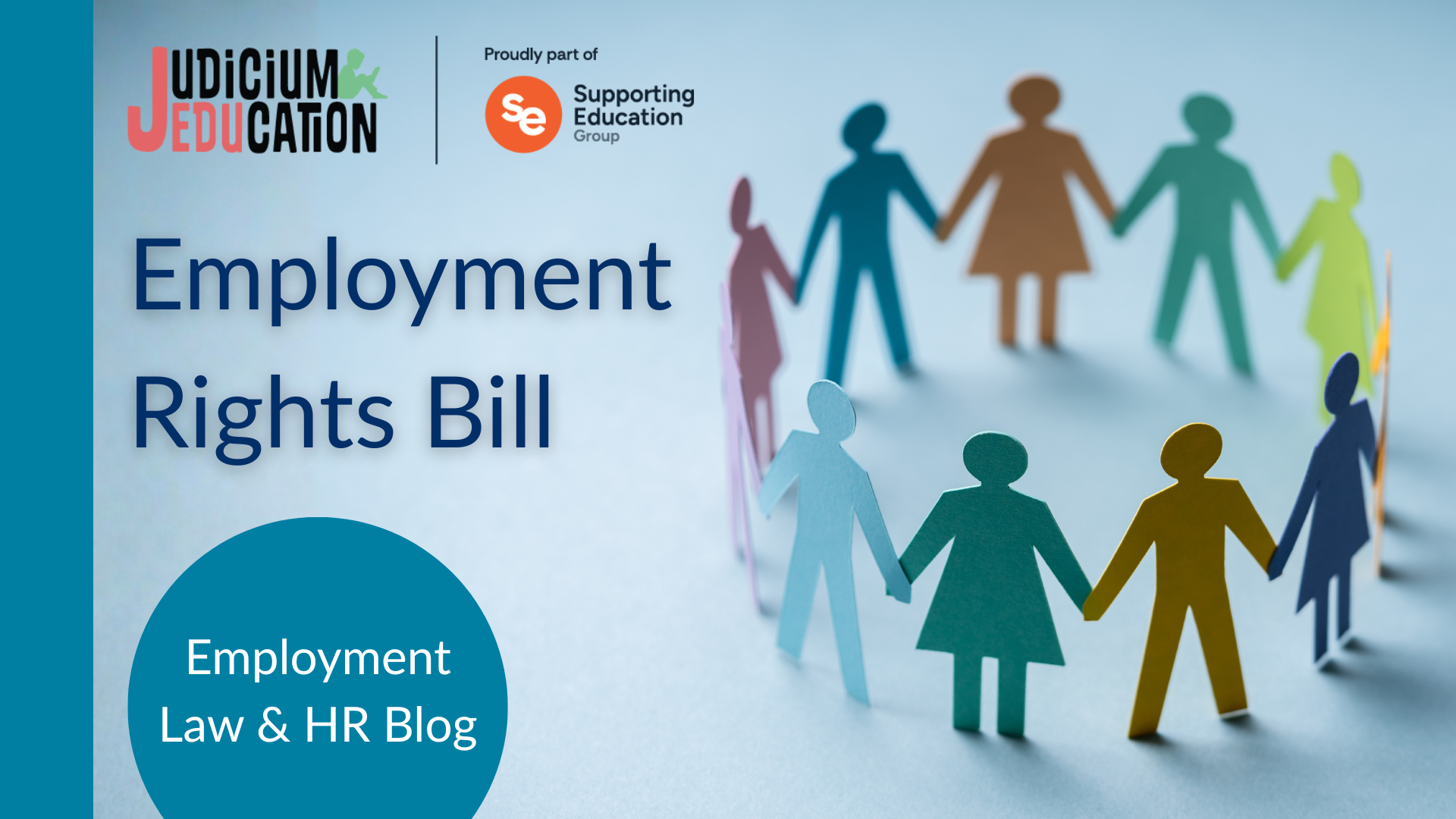
This summary is based on Judicium’s HR ‘Sofa Session’ from the 23rd of November, with our resident expert Jenny Salero, LLB (Hons), L.P.C. This session focused on who can request to take SPL and the eligibility requirements; how requests for SPL should be made; and how many SPLIT days staff can take during SPL and how to make best use of these.
What is Shared Parental Leave
It was introduced in 2015 as an additional parental right which allows more flexibility for parents in how they take leave following the birth or adoption of a child or following a successful surrogacy arrangement.
SPL allows parents to split and share up to 50 weeks of leave (or any remaining balance of leave after maternity or adoption leave has come to an end).
This is in addition to the up to two weeks of paternity leave partners can take and the 18 weeks of unpaid parental leave.
Shared parental leave can also be used in combination with either maternity leave, which is up to fifty-two weeks, or adoption leave which is also up to fifty-two weeks.
However, shared parental leave and pay can be a little more complex because there are eligibility requirements in relation to the person wanting to take it SPL as well as their partner, whether it's an adopter, partner, husband, father, etc.
Although it is a statutory right, it’s important to remember it is optional and the onus is on the employee to opt in.
At Judicium we have seen a trend in the increase of SPL requests from clients in the past year or so. More and more requests are filtering through and can often prove tricky for schools/Trusts to navigate.
Poll

Eligibility for SPL
*We are focusing on the requirements in the situation of birth as it is the most common scenario we have seen in SPL requests and the provisions in both adoption and surrogacy mirror these.
Requirements for birth mother to request SPL
1. Continuity of employment
If SPL is requested by the birth mother, they must have continuity of employment. Essentially, she must have been employed for 26 weeks or more at the end of the fifteenth week before the baby is due. This is similar to maternity leave.
2. Responsibility
At the date the baby is born, she must have main responsibility for caring for the child alongside her respective partner.
3. Entitled to Maternity Leave
They need to be entitled to maternity leave.
4. Curtail Maternity Leave
The mother must curtail her entitlement to maternity leave, to bring this to an end and include information outlined within the relevant legislation to do this.
5. Notice periods
The employee must give the school 8 weeks’ notice of their intention to take shared parental leave.
They must also give notice of the leave period or periods that they would like to take. It must be taken at minimum in weekly blocks (not days). Furthermore, they can only request up to three blocks of SPL.
If you want to ask for evidence of a copy of the child's birth certificate, and details of the partner's employer, you can do that as part of your cross-checking.
Requirements on partner to allow birth mother to take SPL:
There are also requirements on the partner, which in birth cases could be the father, spouse, civil partner, or partner of the mother who was expecting a baby to qualify for SPL.
1. A partner must be economically active, satisfy an employment and earnings test
2. A partner must have joint responsibility for the caring for the child.
Requirements for partner to request SPL:
The requirements are very similar to that of a birth mother as noted above. However, there is no requirement to be entitled to maternity leave or curtail this right (as this only applies to the birth mother).
Requirements on birth mother to allow partner to request SPL:
The birth mother must also satisfy the employment and earnings test, have main responsibility to care for the child (alongside the partner), be entitled to maternity leave and SMP/MA. Where the mother is entitled to maternity leave this must have been curtailed either by notice (alongside any entitlement to maternity pay) or returning to work.
Eligibility for Shared Parental Leave
Receiving the reference is a very important part of the recruitment process. Within education it is advised to obtain references before the interview process takes place. This enables you to ask any questions of the individual about any anomalies or any concerns received in a reference during the interview process.
A birth mother must meet the following requirements:
1. Earnings
-
The mother must earn above the normal weekly wage earnings (£123/per week).
2. Entitled to statutory maternity pay or allowance
-
She must have been entitled to statutory maternity pay or maternity allowance and curtailed this right.
3. Childcare
- The mother must have the main responsibility for caring for the child (except for the partner).
-
They must be intending to care for the child during each week of shared parental pay and must be absent from work during each week of shared parental pay apart from shared parental leave in touch (SPLIT) days.
4. Partner’s eligibility requirements
-
The partner must satisfy normal weekly earnings much in the same way as the birth mother.
-
They must be intending to care for the child during that time of shared parental pay and must be absent from work during the shared parental leave they've requested to take.
- In addition, to qualify her partner, the mother must:
- Be the main carer or have responsibility to satisfy the employment and continuity conditions
- Have been entitled to maternity pay and have curtailed their rights in favour of shared parental pay.
Requesting Shared Parental Leave
There are two requirements when requesting SPL:
- If the person requesting SPL is either a pregnant member of our staff or the primary adopter, they need to provide what's called a curtailment notice.
- It is essentially a written letter stating they want to bring their maternity leave or adoption leave to an end.
- They need to provide 8 weeks’ notice of the date they want shared parental leave to commence, their proposed return date and the date of which they want their partner to commence SPL.
NB: We recommend having a single form, often called an ‘opt in notice’ that requests all the relevant required information.
Frequently Asked Questions:
1. Does a partner forfeit their 2 weeks’ paternity leave if they opt-in for shared parental leave?
A: The partner/Spouse/Dad/etc. is entitled to take the 1-2 weeks’ paternity regardless of SPL. This is the same for maternity leave as the first 2 compulsory weeks are separate. What is shared is a bank of fifty weeks, or the equivalent provision under adoption leave.
2. What if the mother and her partner are working in the same school and both wish to use SPL. Can they take SPL at the same time, or does it need to be alternating time off?
A: Essentially, yes, they could have SPL at the same time as long as the total time that's taken between the two parents is no more than fifty weeks, the correct notice has been given, they meet the eligibility requirements, etc.
3. What happens when a member of staff gives notice of SPL with blocks that coincide with returning for full pay during school closures and commencing SPL again during term time? Do I have to approve even though it’s being used to extend full pay conditions?
A: Where the request is made as one continuous block (but as three separate requests) pProvided the individual has given the correct notice, unfortunately, there isn't much you can do. It is legal and it's becoming more common within the education sector. Many of our clients experience similar situations upon the return of maternity leave.
If however, the request is made for discontinuous blocks there is a two week period in which to consider the request and agree an alternative arrangement.
4. If a member of teaching or support staff wished to return to work from SPL during a holiday, is the school within their right to ask them to work from home or on site?
A: It depends specifically on their role and the terms of their contract. Most likely not unless they're a senior leader, because closure periods do not fall under a period of directed time for teachers and most support staff roles are TTO. If they've asked to return a few days prior to closure, you can absolutely have them in and treat it as a normal working day.
Otherwise unfortunately not, if they're not normally working or contracted to work during school closures you can’t require them to work despite returning from SPL.
5. How many SPLIT days can each parent on SPL work?
A: Shared parental leave provisions allow each respective parent to work up to 20 SPLIT days (shared parental leave in touch days). These are like the KIT days in maternity leave (and are given in addition to KIT days). They are not required, and the dates should be discussed and arranged with the employee along with pay arrangements. Generally, it is a normal day’s rate of pay.
Helpful Info:
If you’d like to review Judicium’s forthcoming sofa sessions for the remainder of this academic year please click here
Follow us on Twitter: @JudiciumEDU
© This content is the exclusive property of Judicium Education. The works are intended to provide an overview of the sofa session you attend and/or to be a learning aid to assist you and your school. However, any redistribution or reproduction of part or all of the contents in any form is prohibited. You may not, except with our express written permission, distribute or exploit the content. Failure to follow this guidance may result in Judicium either preventing you with access to our sessions and/or follow up content.
Related content
(1).png)
On 27 November 2025, the UK government altered a flagship commitment in the Employment Rights Bill and dropped plans to grant most workers protection from unfair dismissal from their first day of employment. Instead, the Bill will now grant unfair-dismissal rights after six months of continuous service. Read this blog to uncover the reasons why, what this means for schools and how we can help.
(1)(2).png)
In this post, we look at the four ERB Consultations that have been launched by the government and set out links to the consultations so that you can have your say.
.png)
Whats New | Sofa Sessions | HR
In this blog, we'll share the summary notes from our HR and Employment Law Sofa Session from the 19th November, delivered by our resident expert, Kirstie Young.
.png)
In this blog, we will explore the significance of enhancing performance and best practice in education and how it can be implemented effectively.

This blog looks at this impact and suggests strategies for improvement.

In this blog, we'll explore what the Employment Rights Bill is, why it is important and how you can get one step ahead and plan for upcoming changes.

Whats New | HR